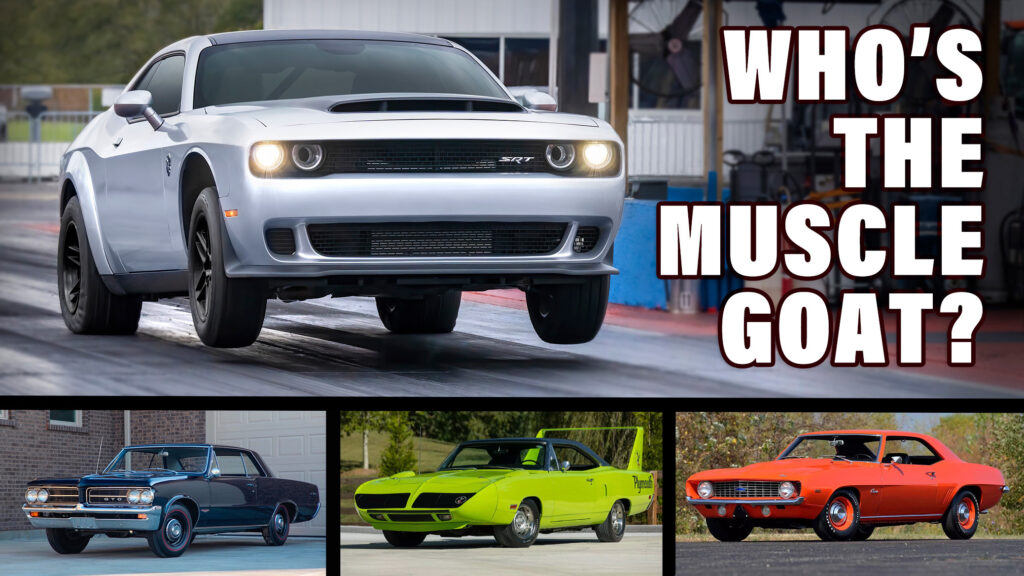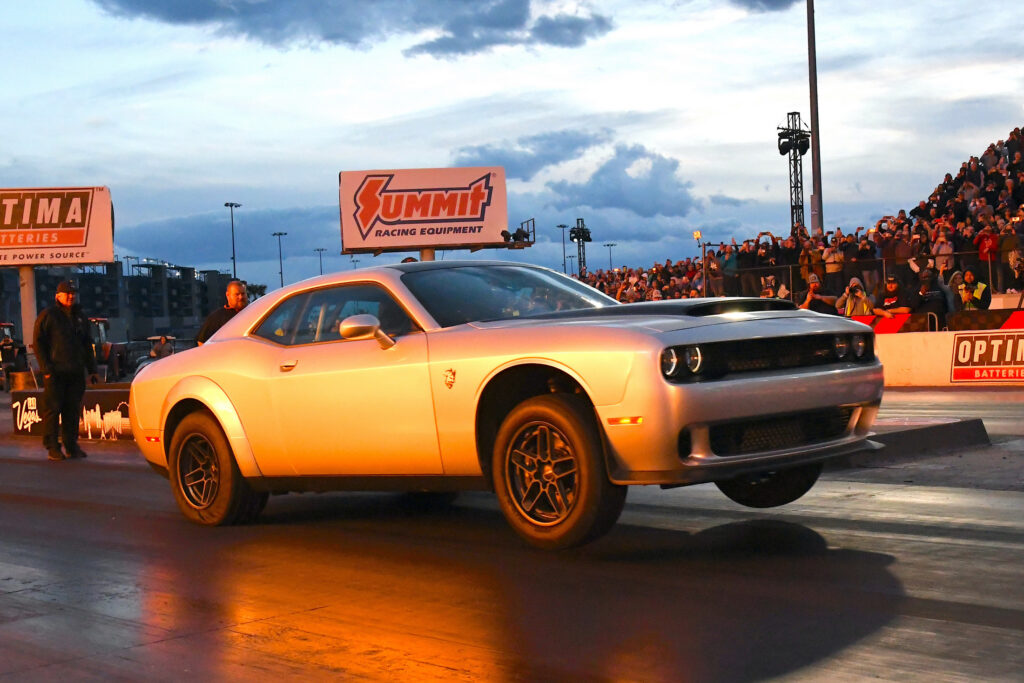Demon 170’s 1.66-second zero to 60 mph time certainly makes it the fastest, but does quickest equal best?
6 hours ago
 –>
–> 
by Chris Chilton
–>
Dodge’s combustion-engined muscle car era is ending with a bang. A bang plus a demonic whine from a supercharger, and a loud gasp from everyone who’s seen the insane acceleration numbers and power figures of the company’s final Last Call car.
The 2023 Dodge Challenger SRT Demon 170 might not look much different to some of the other Hellcat-powered Dodge Challengers we’ve met over the last few years, including the 840 hp (852 PS) Demon launched in 2018. But with the capacity to pump out 1,025 hp (1039 PS) and 945 lb-ft (1,281 Nm) when fueled with the right juice, or a barely less crazy 900 hp (913 PS) and 810 lb-ft (1,098 Nm) on E10 fuel, it’s like no road-going factory muscle car we’ve seen before.
Related: Dodge Opens The Gates Of Hell With 1,025 HP Challenger SRT Demon 170

Those power and torque figures, plus a set of 315/50 R17 Mickey Thompson ET Street R drag radial tires and heavy duty driveshafts, enable the 170 to explode off the line and hit 60 mph (96 km/h) in 1.66 seconds, and demolish a quarter mile of drag strip in 8.91 seconds at 151.17 mph (243.28 km/h).
It’s an incredible way to send off not only the current Challenger, the Hellcat V8 and Dodge’s combustion-engined performance program, but also the entire American muscle car species. It’s very unlikely that we’ll ever see another ICE-powered muscle car as crazy as this. But does being the fastest factory muscle car of all time qualify the Demon 170 as the greatest muscle car of all time? Maybe, but it’s certainly got some tough competition in that regard, including these legends.
1969 Chevrolet Camaro ZL1
advertisement scroll to continue
The Demon 170 talks a good game about being a drag racing hero and even has the parachute to go with it, but the 1969 Camaro ZL1 was the real deal. It existed purely to homologate Chevy’s National Hot Rod Association (NHRA) racing program and came with a totally unique aluminum-block, 7.0-liter, 427 cu-in V8 that added almost 100 percent to the purchase price of a Camaro coupe. Dodge is building around 3,300 of its new Demons but Chevy only built 69 ZL1s and made no effort to market them.
1969 Ford Mustang Boss 429
The Boss 429 is another muscle car with a genuine motorsport connection, though this time it was NASCAR, and not drag racing. Ford needed to homologate the hemi-head, 7.0-liter, 429cu-in V8 it planned to use in its Torino racers, but for some reason decided to do it by putting the motors in Mustangs. That decision caused a ton of engineering headaches and the guys at Ford’s Kar Kraft skunkworks had to hack the front end of the Boss 429 Mustang around just to get it to fit. Despite packing a monster motor the Boss wasn’t the fastest muscle car of the period in a straight line, but the backstory alone means it ranks as one of the greatest.
1964 Pontiac GTO
The GTO was never the quickest muscle car, or even the first if we’re being picky, but Pontiac was quickest of all the Detroit companies to realize the potential of an affordable performance car in a booming youth market. It also understood that creating a cool image and generating some headlines (including by pinching Ferrari’s GTO name) was every bit as crucial to its success as sticking a load of hi-po parts on a car. Pontiac cleverly gamed the GM system that banned big engines in small cars by making the 389 cu-in (6.5-liter) V8 an option, and soon every automaker was at it. And hey, since we’re asking who is the greatest of all time, surely the GTO’s ‘Goat’ nickname from the 1960s ought to count for something?
1970 Plymouth Superbird
Surely the most recognizable muscle car of all time, and a serious contender for The Greatest, the Plymouth Superbird, was another Detroit supercar – which is what muscle cars were actually called in period – with a NASCAR connection. The visually similar Dodge Charger Daytona actually preceded the Superbird by a year and was the first NASCAR to hit 200 mph (320 kmh), but it was the arrival of the Plymouth for 1970 that helped Chrysler secure that year’s championship.
1968 Dodge Charger Hemi
We could have picked a ’70 or ’71 Challenger Hemi for this spot, and given the story’s Demon hook, it might have been more appropriate. But for a huge number of people the 1968-70 Dodge Charger is the definitive muscle car, and if we’re going to drill down, then it’s got to be a ’68, the only year with the basic open grille and round taillights, and equipped with the rare 425 hp (431 PS), 426 cu-in V8.
So do you think the SRT Demon 170 is significant enough to outrank these muscle icons, or would you suggest another car we’ve missed? Leave a comment and let us know.
2023 Dodge Challenger SRT Demon 170
 –>
–> 

